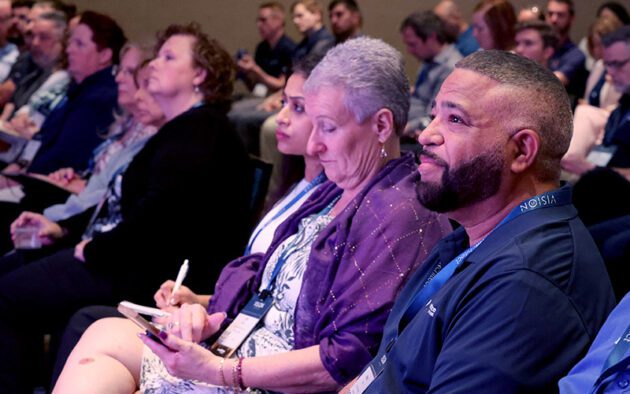The Growing Importance of Employee Experience in Recent Years
Delivering superior employee experience (EX) has been a front-and-centre topic in HR circles. The reasons are straightforward and include outcomes such as improved employee productivity and retention, as well as a stronger employer brand for attracting top talent. These significant business benefits are being enjoyed by enterprises across industries and geographies when best-fit employee experience programs are in place, extending to predominantly deskless worker industries such as manufacturing, natural resources, public sector, transportation and retail.
The “best-fit” employee experience program encompasses more than the unique operating aspects of a particular industry as businesses within the same vertical can still have very different EX-related challenges and results. This is the case even when their respective compensation, benefits, learning and career growth opportunities, and surrounding workforce practices are generally comparable.
The complexity and variety of these challenges are due to several factors. Prominent among them is the degree to which an organisation is closely monitoring the quality of its employee experience as perceived by workers, using a variety of means to objectively assess and measure that quality and intervening with quick and effective actions when issues are apparent. This level of attention is critically important in deskless worker environments, as employee interactions with colleagues and managers can be sporadic, making it difficult to keep a finger on the pulse of employee attitudes, well-being and job satisfaction.
Determining the EX Baseline With Deskless Workers
The first step in improving any business results or performance is to employ a reliable and appropriate set of metrics that serve as a baseline for subsequent comparisons. This data will highlight whether results are acceptable and which direction they are trending. Focusing again on the deskless worker employee experience, a common way of establishing a baseline is rooted in the same methods used to evaluate levels of employee engagement and/or attitudes toward a new HR policy—namely, anonymized surveys. Given that this segment of workers is often in the field and away from a computer or workstation, surveys must be mobile, quick and should occur in the flow of work.
It is also important to recognise that the potential for environmental or customer-related distractions with deskless workers is typically greater due to unforeseen or less controllable circumstances on the job (picture manufacturing, transportation, or retail workers). Ideally, you should construct surveys around specific operational questions rather than general satisfaction barometers. Examples include: “How was your roster this week?” or “Did you have enough information to work the new line in the plant?” or “Were the tools provided adequate for your tasks?” These questions focus more directly on the daily operational aspects of the workers’ roles.
Still, even pointed survey questions are not enough to frame the EX-baseline given the arguably less predictable and controllable “day in the life” of a deskless worker. Therefore, you should use numerous other means to identify the EX-baseline in a more comprehensive manner.
Another more technology-centric method to assess how the delivery of EX is perceived is “sentiment analysis,” an AI-powered use case where employee feedback is aggregated and anonymised. Detected common words and themes reflect the general direction of employee feelings. Sentiment analysis, however, often gets mixed reviews from deploying organisations as some words and expressions might be triggered by or related to experiences outside of one’s workday, so this method should ideally be used in conjunction with other forms of assessing workforce attitudes.
Using Indirect Employee Experience Analytics
For organisations that want to be even more committed to assessing the efficacy of their employee experience for deskless workers, there are many examples of HR or people analytics that can offer a more complete picture. The following are examples of KPIs in the workforce management and HCM domains to more broadly assess the employee experience of workers, including deskless workers, especially when examined within a specific trendline. These are more of the indirect variety, in contrast with employee turnover, which is a very direct employee experience KPI:
- Business metrics like sales volume, cost of sales, customer satisfaction and NPS scores
- Other business performance metrics, such as the percentage of tasks/projects completed on time vs. not
- Employee lateness, absenteeism/sick days and accident rates
- Response rate and completion of surveys by employees
- Number of employees with satisfactory performance ratings
- Percentage of employees with formal development plans
- Number of jobs filled internally and number of promotions
- Quality of training completed by employees
- Number of complaints and claims filed by employees
- Quality of supervisor/manager evaluations, like providing specific examples are given
- Direction of feedback on assigned tasks when completing work activities
- Degree to which “lack of relevant information or guidance” comes up as reasons for task completion issues
- Frequency of opportunities for employee to provide candid feedback
- Effectiveness of communications tied to triggers/rules
Building an Improvement Framework for Better Experience
It is important to note that outcomes from all the above methods and tools for evaluating the quality of the employee experience still need to be placed in some framework that allows for the pursuit of improvements when results are deemed unsatisfactory. Such a framework might involve starting with pointed survey questions. Then, after allowing some time to pass to avoid making employees feel intruded upon or very inconvenienced, you can conduct an employee focus group to gain more colour and context around the survey results. Finally, analytics like those above can provide more insight into causal factors and noteworthy correlations.
Assessing and when necessary, improving the employee experience of deskless workers likely requires a more multi-faceted and creative approach given that their daily challenges and ways of addressing them are not as visible. This dynamic applies just as much to these employees’ sources of satisfaction and enjoyment each day at work. These are the two sides of the “EX coin,” and both need to be made more apparent on a consistent and on-going basis for organisations to reap the benefits of their workforce investments. Additionally, so that enterprises can optimally intervene when the trajectory of EX-related data requires action, there should be a framework developed that is specifically designed to guide management based on the most concerning indicators.





